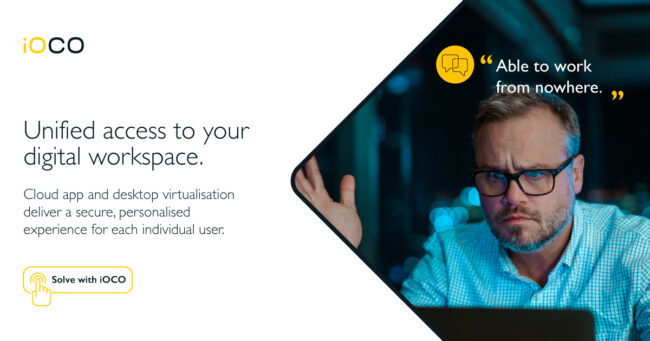Hybrid work is here to stay. How your people connect and access applications and data, and the extent to which you can make the employee experience more secure, productive, seamless and cost-effective will increasingly determine your attractiveness as an employer.
One way to create powerful anytime, anywhere user experiences is by virtualising applications. Virtualisation is nothing new. When the concept really started taking off, it was all about consolidating server hardware to save on costs.
Today, we’re able to virtualise networks, servers and storage subsystems in such a way that software can be used to provision whatever is needed from a single interface.
Think of virtualisation as a mini cloud. Instead of an app that you download to your phone and run from there, virtualised apps live on a central server.
When you access the app from your phone, you’re actually just getting instructions sent from the server to change the pixels on your display.
Your device doesn’t do any of the heavy lifting when it comes to processing, storage and memory. That’s all handled remotely.
Your phone or tablet becomes, in effect, a display terminal with a range of inputs allowed.
And that means that someone with an old ‘hand-me-down’ and someone with a bells-and-whistles feature phone will have an almost identical experience when using a virtualised app.
That’s a huge benefit of virtualisation: it removes the dependence on having the most powerful and up-to-date end-user device with a specific operating system.
So, if you’re rolling out a new application to thousands of your people, you don’t need to buy them all the most up-to-date hardware.
Or if you’re a bank, you don’t need to restrict your app to the people with current-gen phones or a specific operating system.
But virtualisation has even more going for it:
- Lose your phone or tablet? Since data is stored and processed centrally and not on the device, your data is safe.
- Legacy apps can be virtualised and can then be used on devices with otherwise-incompatible operating systems.
- Virtualised apps are easily deployed, packaged and maintained. They only need to be installed once, and access control, updates and maintenance are centralised and therefore simpler and more secure. For this reason, virtualised applications are often significantly more cost-effective than rolling out multiple installations of native apps across all end-user devices.
What can’t be virtualised? Certain applications – for example, those that rely on intensive graphics processing – aren’t always suitable for virtualisation.
Virtualisation also depends on constant communication between the end-user device and the infrastructure where the application sits, and thus requires dependable connectivity.
But many of the applications we use every day – for example productivity apps, web-based apps and those residing in private and public clouds, such as HR and financial apps – are great candidates for virtualisation, since they can be centrally modified, with changes reflecting instantaneously across end-user devices.
At iOCO we enable you to support your hybrid workforce through remote, secure access to applications, and move your end-user-computing from individual devices to a centralised, cloud-based infrastructure.
Virtualising apps cost-effectively and efficiently begins with analysis and consultation. iOCO’s analysis agents provide rich telemetry that allows us to accurately profile end-point performance and user behaviour to construct the most appropriate model for virtualisation and provide a baseline for further evaluation.
That means solutions are only implemented where they can add value.
The demand for seamless, secure and productive employee experiences has never been more acute. Virtualisation, intelligently implemented, can be a potent tool, and a powerful component of a holistic employee-experience solution.
This article was written by Alex Russell, MD, Compute Division, iOCO


3handbook